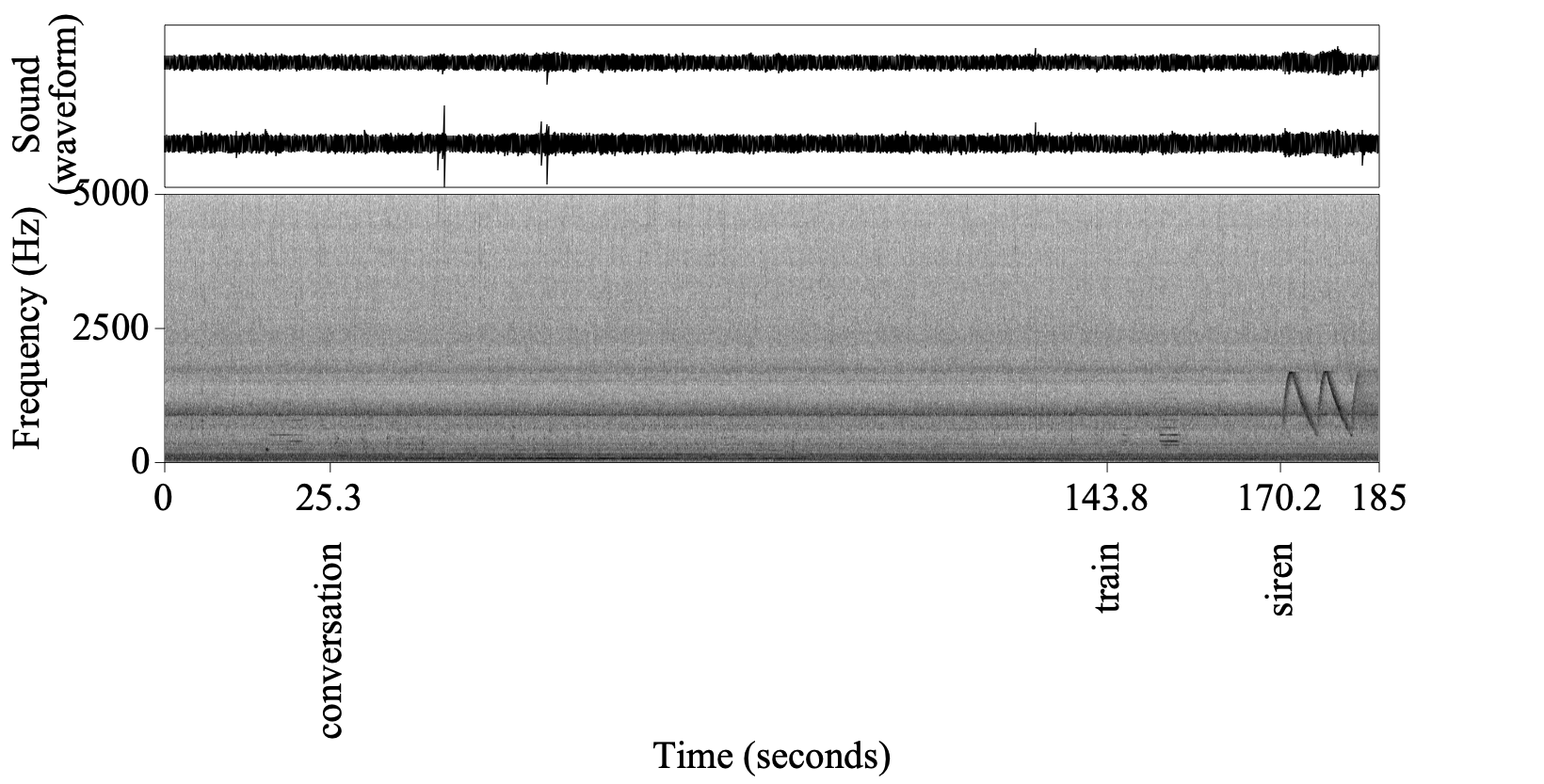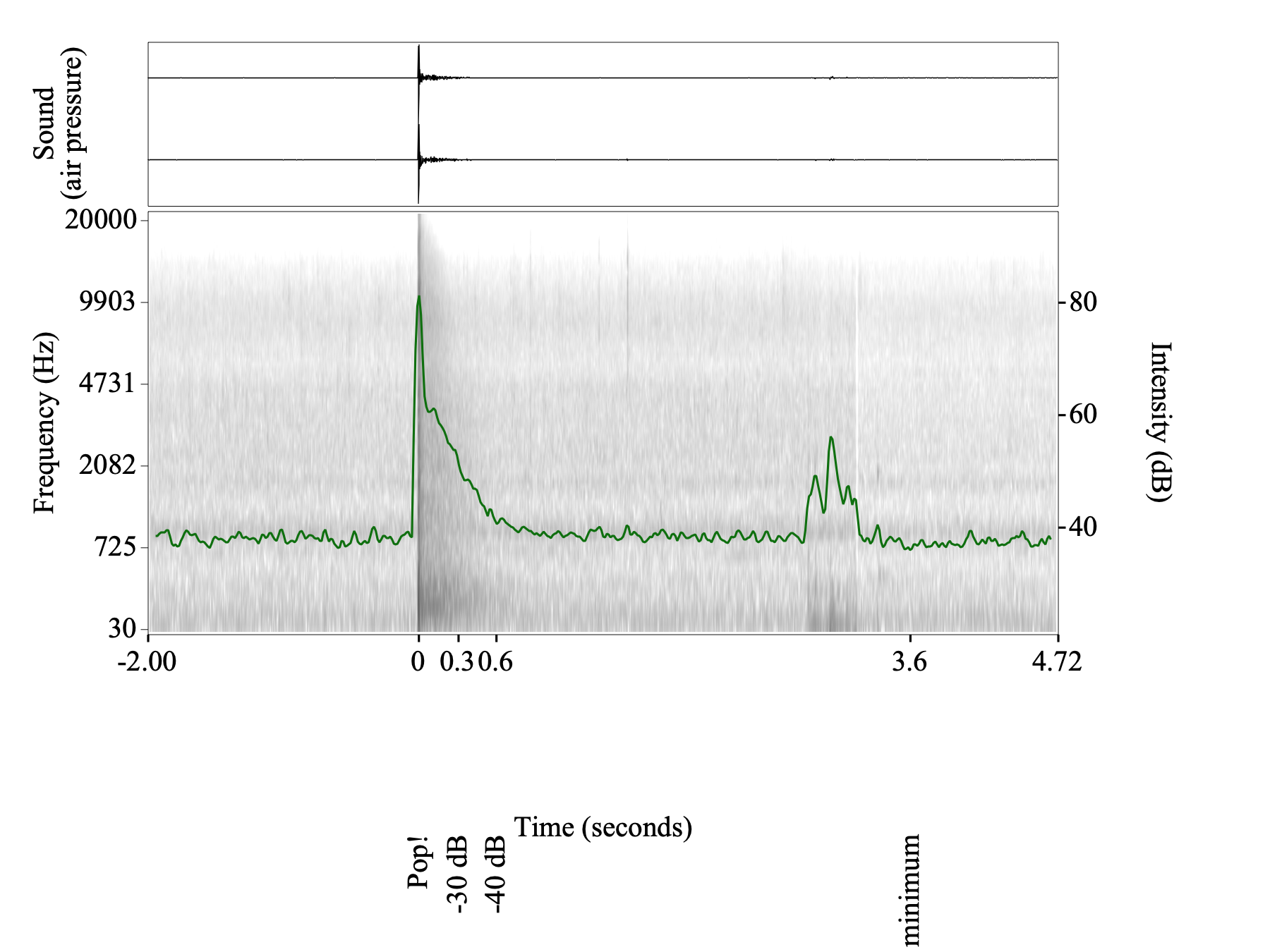

Loading map...

The Skyspace structure, designed by artist James Turrell, is a large permanent art installation on Pomona College’s campus consisting of a square courtyard enclosed by metal columns which uphold a flat roof with a square opening in the center to allow viewing of the sky. The columns are surrounded by various palms and ferns, and three sides of Skyspace (north, east, and south) are encircled by the Lincoln-Edmunds building. The loudest feature of Skyspace is the central fountain, with its rush of water falling down the sides of the pool and into the depths below. The sound of the water is so strong that all other sound in the space is dampened by it. The fountain sound is the keynote of Skyspace: it forms the aural center and sets the backdrop for all other sounds in the space. All of these architectural and spatial factors serve to insulate the space so that the courtyard echoes with the sounds produced within reverberating across the space. Skyspace is lit each morning and evening with multicolored lights which paint a wash of color over the roof and change the viewer’s perception of the color of the sky seen through the roof’s opening. Although the lighting is, on first glance, the primary aesthetic value of the space, I believe Skyspace’s sonic qualities are equally important.
I entered the Skyspace at 5:45pm on a Tuesday night for the sunset program and sat down on the stone bench on the southwest side, near the western entrance to the courtyard. There were six people present besides myself at the time of recording: one group of three, a pair, and one person seated alone. The groups engaged in soft chatter as the sunset program began. Though some individual voices were distinguishable, the content of their conversations was indiscernible in the wash of sound, though some laughter punctuated the indistinct murmur. The sounds of people interacting with the art installation can be considered another keynote of the space, as this background noise gives shape to the space and “outline[s] the character of men [sic] living among them.”
A number of signal sounds were also present during the 45-minute duration of the sunset program. These included the loud whirring of airplanes overhead, the sound of which rose and fell in pitch as they grew nearer, and the occasional distant whistle from a train passing through the Claremont station. The door to Lincoln Hall emitted a high pitched squeal with each student who entered or exited, followed by a slow descending whine as it closed. Every so often, a student on a skateboard would ride past the south end of Skyspace on the walkway between the courtyard and Edmunds. The pavement of this walkway has a resonant cavernous quality when trod upon, and the skateboards riding over it created a thunderous noise as the wheels went over the fissures in the sidewalk.
The overall sonic atmosphere of Skyspace is quite loud, but the consistency of the sound, particularly of the fountain, creates a tranquil, white noise effect, muting the external environment in favor of the sounds contained within. The space serves as a sonic cocoon which holds its sounds close and then lets them flutter and bounce off of each surface. Overall, the Skyspace creates an intimate setting in which the wash of sound conveys an aural serenity to match the effect of its visual display.